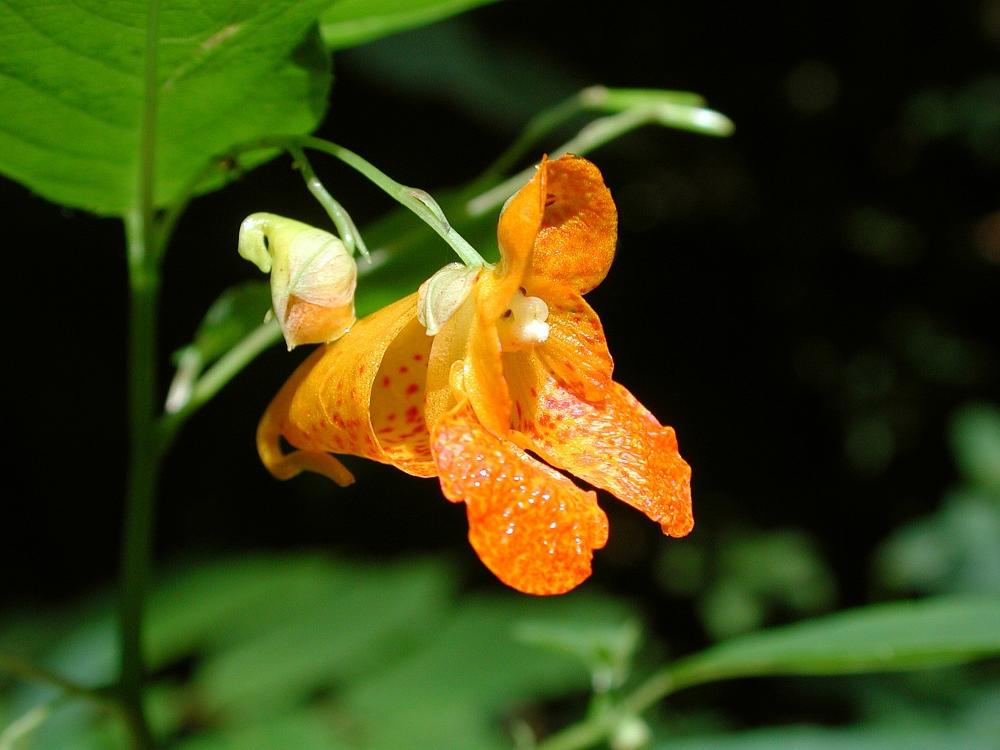
Orange jewelweed (Impatiens capensis)1 commonly grows in ditches along roadsides at the edges of moist forests. Lore has it that the sap of this plant rubbed onto poison ivy rash quickly alleviates the itching.
Could there be a scientific basis for this popular notion? Perhaps. Let’s begin our consideration by discussing the active principle in both poison ivy and jewelweed.
Poison Ivy and Urushiol
Urushiol is not a single compound, but a mixture of similar compounds that have the generic chemical structure show in the image associated with this article. R represents an alkyl chain that typically contains 15 to 17 carbon atoms that contain varying numbers of double bonds. The greater the number of double bonds, typically the more virulent the urushiol fraction.
Jewelweed and Lawsone
Lawsone is the principal and possibly active ingredient in jewelweed, and is a dye. Due to its prevalence in henna, it is also called hennatannic acid. Lawsone has been used in temporary tattoos and in dying hair, although its use is controlled, even forbidden in some nations. Hennatannic acid is a naphthoquinone derivative and, like urushiol, is a polar covalent species.
A general truism in chemistry is that like dissolves like. Urushiol and lawsone are both covalent, not ionic. They are both capable of forming hydrogen bonds. Could it be that lawsone in jewelweed sap, when applied to a fresh exposure of urushiol, hydrogen bonds to the urushiol and forms a kind of oily mix with it that can be partly wiped away? While it may not completely eliminate a rash from poison ivy exposure, might it not at least attenuate it so the sufferer gains some sense of relief?
1 There is a yellow variety of jewelweed, Impatiens pallida.
Note: You might also enjoy Hydrogen Bonding Effects at Various Levels
References:
- The Henna Page: Lawsone, by Dr. Boyan Bonev
- Penn State University – New Kensington Trail Species Pages
- European Commission: Opinion of the Scientific Committee… Lawsone
- Chemical & Engineering News Abstracts: Detecting Fingerprints with Lawsone